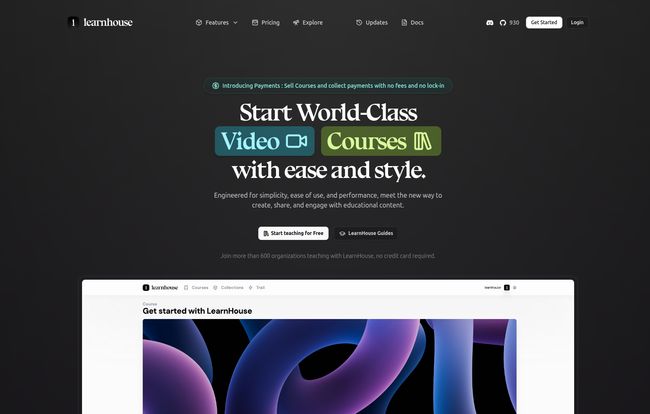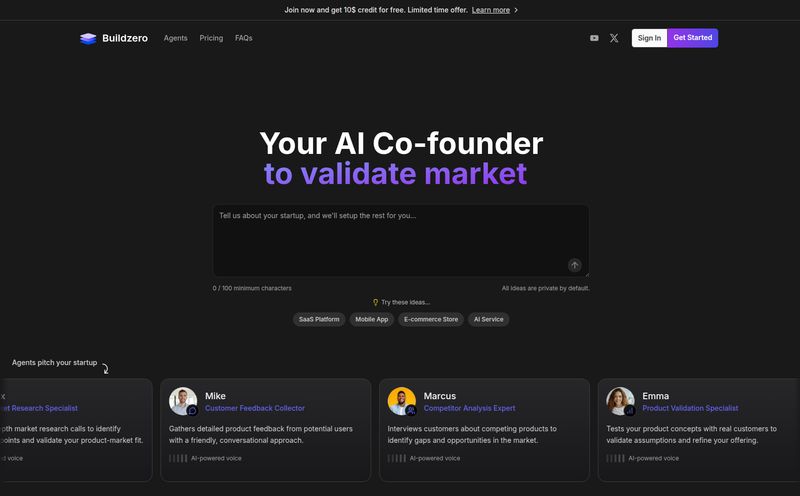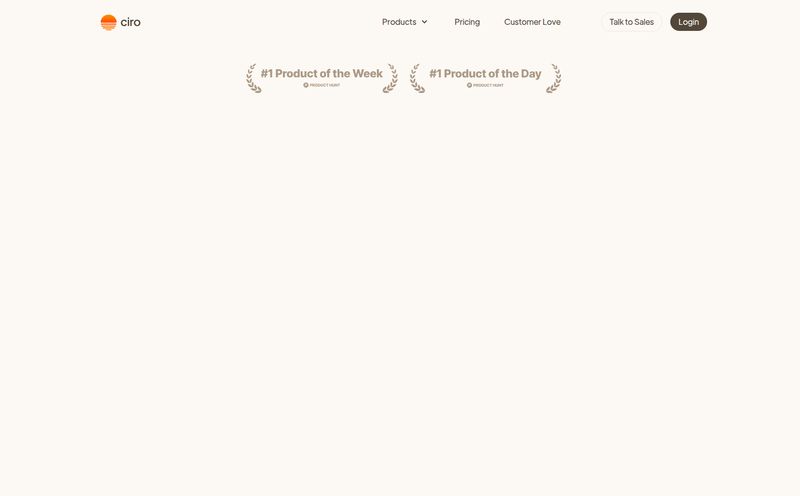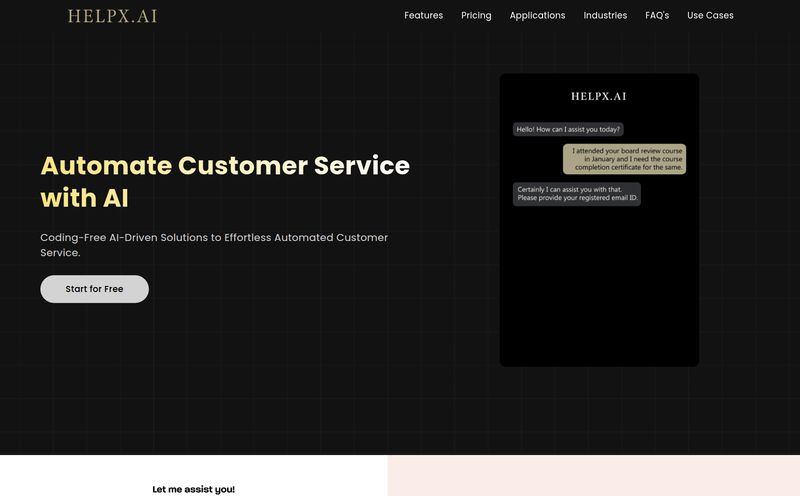The world of online course platforms is… crowded. You’ve got the big-name players like Teachable and Kajabi, who offer these polished, all-in-one ecosystems. They're like the fancy, gated communities of the internet. They're safe, everything works, but boy do you pay for the privilege. And you're always playing by their rules, living in their house.
For years, many of us in the SEO and digital creator space have been looking for something different. Something with more freedom. Something that doesn't lock you into a proprietary system or drain your bank account before you've even made your first sale. We've wanted a platform with the power of a modern LMS but with the soul of an open-source project. And I think, just maybe, I’ve stumbled upon a serious contender: LearnHouse.
I came across it recently, and the phrase “open-source learning platform” immediately got my attention. It promises the ability to create everything from a simple online course to a full-blown digital university. So, naturally, I had to take a look under the hood. Is it all just marketing fluff, or is this the real deal?
So, What Exactly is LearnHouse?
At its heart, LearnHouse is a platform designed for anyone who wants to teach something online. Think of it as the framework for your own educational empire. Whether you're a developer running a coding bootcamp, a company creating internal training programs, or a creator sharing your passion for pottery, LearnHouse aims to give you the tools to do it. The vibe is very much “teach the world,” and I can get behind that.
But the real kicker is its open-source foundation. This isn't just another SaaS tool. It means you can, if you have the technical chops, grab the code and build whatever you want on top of it. That’s a level of control you just don't get with the mainstream platforms.
The Features That Actually Matter
A platform can have a million features, but only a few truly define the experience. After playing around, a few things really stood out to me about LearnHouse.
The AI Copilot: More Than Just a Gimmick?
Okay, I'll admit it. When I see “AI-powered” on anything these days, my eyes tend to glaze over. It’s the marketing buzzword of the decade. But with LearnHouse, the AI Copilot feels genuinely thought-out. It’s designed to help both teachers and students. For educators, it can help brainstorm course outlines, generate quiz questions, or just get you past that dreaded writer's block when creating lesson content. For students, it acts as a tutor, helping to explain complex topics. I'm still testing the limits, but it feels less like a tacked-on feature and more like an integral part of the learning process. It's a smart move.
Building Courses with the Blocks Editor
If you've ever used WordPress's Gutenberg editor or built a page in Notion, you'll feel right at home. LearnHouse uses a blocks-based editor, which is just a fancy way of saying you build your course pages piece by piece. Want to add a video? Drag in a video block. Need a text section? Drop in a text block. Quizzes, documents, embeds—it’s all there. It’s like building with digital LEGOs. This makes the creation process intuitive and, dare I say, fun. You’re not fighting with some clunky, outdated interface; you’re just creating.
Managing Students and Getting Paid
This is where the rubber meets the road. A course platform is useless if you can't manage your members or, you know, make money. LearnHouse has this covered. You can easily manage your students, organize them into groups, and track their progress. More importantly, it integrates payment collection, allowing you to sell your courses or offer subscriptions. This turns your educational project into a viable business, which is the end goal for most creators.

Visit LearnHouse
The Elephant in the Room: Open Source vs. Hosted
This is probably the most important part to understand about LearnHouse. You have two main paths.
- The Cloud-Hosted Plans: This is the easy route. You sign up, pick a plan (including that fantastic free one), and start building on their infrastructure. They handle the servers, the security, the updates. It's the plug-and-play option.
- The Self-Hosted Community Edition: This is the power-user route. You download the software and install it on your own server. It's completely free to use the software itself, but you're responsible for hosting costs and all the technical maintenance.
The self-hosting option is a double-edged sword. On one hand, you get ultimate freedom. You can customize the code, integrate it with anything, and you truly own your platform. Your data, your rules. On the other hand, if you don't know what `SSH` or `Docker` means, you're probably going to have a bad time. It’s not for the faint of heart, but for developers or agencies, it's a game-changer.
Let's Talk About LearnHouse Pricing
This is where LearnHouse really shines, in my opinion. The pricing structure is incredibly fair and makes sense for creators at different stages. I've broken it down into a simple table because, let's face it, nobody likes reading dense paragraphs about money.
| Plan | Price | Who It's For |
|---|---|---|
| Free | $0 / forever | Hobbyists, or anyone wanting to test the waters. Seriously generous: 5 courses and 50 members. |
| Standard | $28 / month | Growing creators who are ready to get serious. Unlimited courses, more members, and payment features. |
| Pro | $48 / month | Organizations and power users needing more capacity and advanced features (some are still planned). |
That Pro plan is where I have a slight hesitation. It promises features like Learning Paths and Certifications, but lists them as planned. Paying for a roadmap can be risky. However, given the pace of development in the open-source world, these could arrive sooner rather than later. Its a calculated risk.
My Honest Take: The Good, The Bad, and The Promising
No tool is perfect. After my initial analysis, here's my unfiltered take.
The Good: The design is beautiful. It’s clean, modern, and a joy to use, something that can't be said for a lot of open-source software. The free plan is almost absurdly generous and is the perfect, no-risk way to get started. And of course, the open-source nature provides a level of freedom that's simply unmatched by the competition.
The Not-So-Good: The dependence on planned features for the top-tier plan is a bit of a yellow flag for me. I prefer to pay for what exists now, not what might exist later. Also, relying on community support with the free plan means your mileage may vary. If you run into a tricky issue, you're at the mercy of the community's goodwill.
How Does LearnHouse Stack Up Against Teachable?
This is the question most people will ask. Against a giant like Teachable, LearnHouse competes on a different axis. Teachable offers a super-polished, hand-holding experience. It's easier for a complete non-techie to get started. But you pay for that convenience, and you're forever stuck in their ecosystem.
LearnHouse is for the creator who values control and affordability. It's for the person who thinks, “I wish I could just tweak this one thing…” With LearnHouse (especially the self-hosted version), you can. It's a trade-off between convenience and control, between a walled garden and an open field.
Frequently Asked Questions about LearnHouse
- What do 'Members/Students Seats' mean?
- This is simply the maximum number of unique users who can be enrolled in your courses at any given time for a specific plan. You can always upgrade if you need more seats.
- Can I use my own domain name?
- Yes, you can. On the paid hosted plans, you can connect your custom domain. And if you self-host the community edition, you have complete control over the domain from the start.
- Is there a free trial?
- Even better. LearnHouse offers a “Free forever” plan. It has some limitations, but it’s a fully functional platform you can use indefinitely, not a timed trial that pressures you into buying.
- Is LearnHouse good for complete beginners?
- For the cloud-hosted version, yes. The interface is very intuitive. If you can write an email, you can probably build a course. The self-hosted version, however, is aimed at more technical users.
- What is a CDN?
- A CDN, or Content Delivery Network, is a system of servers spread around the world. It stores copies of your content (like videos and images) so they load quickly for your students, no matter where they are. It’s a huge plus that this is included even on the free plan.
- Is self-hosting LearnHouse difficult?
- It depends on your background. If you're a developer or comfortable with server administration, you'll likely find it straightforward. If you've never used a command line, it will be a significant challenge. It’s best to be honest about your skill level here.
Final Verdict: Should You Build Your School on LearnHouse?
So, here’s the bottom line. I'm genuinely excited about LearnHouse. It feels like a breath of fresh air in a market dominated by expensive, restrictive platforms. It gets the balance between usability, design, and power just right.
If you're a creator, developer, or startup who values flexibility, wants to own your platform, and appreciates a clean, modern design, then you absolutely should give LearnHouse a shot. The free plan makes it a complete no-brainer to try out.
If you're someone who wants every possible feature available on day one and requires 24/7 phone support for every little question, you might be better off with one of the established, more expensive players. For now.
But for the growing wave of independent creators who want to build something that is truly their own, LearnHouse isn't just a good option—it might just be the one we've all been waiting for.



